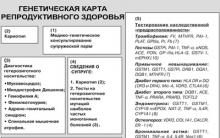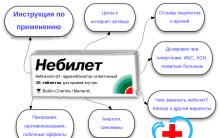July 28 (August 10) is celebrated in honor of the revered icon of Smolensk Mother of God.
Smolensk Icon of the Mother of God. Dionysius, 1482
Smolensk Icon of the Mother of God - venerated in Orthodox Church icon of the Virgin. Refers to the icon-painting type Hodegetria. The Mother of God appears in this image of hers as the Guide of a person going to God. It is presented frontally, looking point-blank at the worshipers. On her left hand, the Mother of God holds the Infant Christ, and with her right hand she points to him as the Savior. The Infant Himself extends one hand to the Mother, and in the other holds a rolled-up scroll - His teaching. TO characteristic features Hodegetria attribute a very slight turn of the Mother of God towards the Son.
The prototype of the Smolensk Mother of God is very ancient and, according to legend, was written by the Apostle Luke himself for the ruler of Antioch, Theophilus. After the death of Theophilus, this image of Hodegetria the Guide returned to Jerusalem; in the 5th century, Empress Eudoxia, the wife of Emperor Theodosius, transferred him to Constantinople, to the Blachernae Church. From there, the future Smolensk icon came to Russia in the 11th century. Perhaps the icon became in 1046 a parental blessing for the daughter of the Byzantine emperor Constantine the ninth Monomakh, Anna, who was married to the Chernigov prince Vsevolod Yaroslavich, the son of Yaroslav the Wise.
However, there is historical evidence that the Constantinople icon was destroyed by the Turks, who divided its precious salary, during the siege of Constantinople in 1453. Therefore, most researchers are inclined to believe that the icon brought to Russia in the 11th century is a list from the ancient Constantinople image.
After the death of Prince Vsevolod, Hodegetria found a new guardian in the person of his son, the Grand Duke of Kiev Vladimir II Monomakh, a commander, writer (author of the famous Teachings) and temple builder. In 1095, he transferred the icon from Chernigov (his first appanage) to Smolensk, and in 1101 he founded the cathedral church of the Assumption here. Holy Mother of God. Ten years later, Hodegetria was placed in this cathedral and from that time on it became known as Smolenskaya - after the city, the guardian of which she remained for almost nine centuries.

Church of the Assumption of the Blessed Virgin in Smolensk.
In the XIII century, the hordes of Batu fell upon Russia, rapidly moving west. Crying and praying, the Smolensk people turned to the intercession of their Guardian. And a miracle happened: the Mother of God, through the image of Hodegetria of Smolensk, bestowed on the city miraculous salvation. The Tatars were already several miles from Smolensk, when a warrior named Mercury heard a voice coming from the holy icon: “I am sending you to protect My house. The ruler of the Horde secretly wants to attack My city with his army this night, but I begged the Son and My God for My house, so that he would not betray him into enemy work. I myself will be with you, helping My servant.” Obeying the Most Pure, Mercury raised the townspeople, and he himself rushed into the enemy camp, where he died in an unequal battle. He was buried in the cathedral church of Smolensk and soon canonized as a saint. In memory of Mercury, on the day of his death, before the miraculous image of Hodegetria, a special thanksgiving service was performed.
In 1395, the Smolensk principality lost its independence, becoming dependent on Lithuania. But just three years later, the daughter of the Lithuanian prince Vitovt Sophia was married to the prince of Moscow Vasily Dmitrievich (son of Prince Dimitri Donskoy), and Hodegetria became her dowry. In 1398, the newly acquired shrine was installed in the Annunciation Cathedral of the Kremlin according to right side from royal doors. Muscovites reverently worshiped her for half a century, but in 1456 a representative of the Smolensk people, Bishop Mikhail of Smolensk, arrived in Moscow and lobbied for the return of the shrine. Grand Duke Vasily the Dark (1415-1462), after conferring with the bishops and boyars, ordered to "release" the miraculous to Smolensk, leaving her exact list in Moscow. On July 28, at the confluence of almost all Muscovites, the icon was solemnly escorted through the Maiden's Field to the ford at the steep bend of the Moskva River, beyond which the road to Smolensk began. A moleben to the Guide was served here, after which the prototype of the miraculous went to Smolensk, and the mourners took the list from Smolenskaya to the Annunciation Cathedral of the Moscow Kremlin. On this day, July 28 (August 10), the celebration of Smolenskaya Hodegetria. In Moscow, it was customary to make a procession from the Kremlin, along Prechistenka and Maiden Field to the Novodevichy Convent, which was founded in 1525.Grand Duke Vasily III at the very place where in 1456 the Muscovites saw off the miraculous icon.

Novodevichy Convent in Moscow.
In 1609 Smolensk was besieged Polish army, and after twenty months of siege, in 1611, the city fell. The miraculous Smolensk icon was again sent to Moscow, and when the Poles captured Moscow, then to Yaroslavl, where it remained until the expulsion of the Poles and the return of Smolensk to the Russian state in 1654, during the reign of Alexei Mikhailovich. On September 26, 1655, the miraculous icon of Hodegetria returned to Smolensk.
Again in Moscow, Smolenskaya Hodegetria appeared during Patriotic War 1812. August 26, on the day of the battle of Borodino, the Smolensk, Iberian and Vladimir icons procession carried around Moscow, and on August 31, Iverskaya and Smolenskaya visited the wounded in the battle, who were in the Lefortovo hospital. When the Russian troops left Moscow, the Smolensk Icon was moved to Yaroslavl. However, already on December 24, 1812 Hodegetria returned to the Assumption Cathedral of Smolensk.
Before the start of the Great Patriotic War, the Smolensk Icon of the Hodegetria remained in its historical place - in the Assumption Cathedral of Smolensk, which was not devastated after its closure in 1929. The last reliable news about the icon of the Mother of God of Smolensk dates back to 1941, when the Nazis occupied the city. Two years later, Smolensk was liberated Soviet troops, but the icon was not in the cathedral.
Now in the Assumption Cathedral of Smolensk, a list of Smolensk icon Mother of God.

Honored list of Hodegetria of Smolensk in the Assumption Cathedral of Smolensk.
One of the most revered copies of the icon in Moscow is located in the Moscow Novospassky stauropegial monastery.

Moscow Novospassky Monastery.
This icon was donated to the monastery by nun Marfa, mother of Tsar Mikhail Fedorovich (16th century). Before the icon they pray for the preservation of help on the way.

Honored list with Hodegetria Smolenskaya in Moscow Novospassky Monastery. Gift of nun Martha.
Troparion, tone 4
Now diligently to the Theotokos, we are sinners and humility, and we fall down, calling in repentance from the depths of our souls: Lady, help us, having mercy on us, we are perishing from many sins, do not turn away Your servants of vanity, You and the only hope of the imam.
Kontakion, tone 6
The intercession of Christians is shameless, the intercession to the Creator is immutable, do not despise the voices of sinful prayers, but precede, as if good, to help us, who faithfully call Ty: hasten to prayer and rush to supplication, intercession ever, the Mother of God, who honor thee.
Lists of Hodegetria of Smolensk.
Smolensk Icon of the Mother of God. Moscow, 1456.

Icon "Our Lady of Smolensk". Tikhon Filatiev. 1668
Icon from the Novodevichy Convent in Moscow.

Icon of the Mother of God Hodegetria of Smolensk (from the local row of the iconostasis of the Smolensk Cathedral).

Mother of God Hodegetria of Smolensk with saints. Novgorod school. 1565.

Hodegetria Smolenskaya with hallmarks. 16th century. Central Museum of Ancient Russian Culture and Art. Andrey Rublev, Moscow

Hodegetria Smolenskaya. 18th century Veliky Ustyug Historical, Architectural and Art Museum-Reserve

Hodegetria Smolenskaya.XV century State Vladimir-Suzdal Historical, Architectural and Art Museum-Reserve

Hodegetria Smolenskaya. 16th century Kirillo-Belozersky Historical, Architectural and Art Museum-Reserve

Hodegetria Smolenskaya. 17th century Perm State Art Gallery

Hodegetria Smolenskaya. 16th century Perm State Art Gallery

Hodegetria Smolenskaya. 16th century Solvychegodsk Historical and Art Museum
Used materials from Wikipedia and sites:
This slideshow requires JavaScript.
On August 10, the 10th week after Pentecost, on the day of the celebration of the Smolensk Icon of the Mother of God, called the Hodegetria, His Grace Seraphim, Bishop of Belevsky and Aleksinsky, committed Divine Liturgy in the Holy Dormition cathedral church of the city of Aleksin, co-served by the rector of the cathedral church - Archpriest Gennady Stepanov and the clergy of the temple. Following the prayer behind the ambo, the bishop performed the glorification before the icon of the Smolensk Icon of the Most Holy Lady, after which he addressed the worshipers with the words of archpastoral instruction.
“Not imams of other help, not imams of other hope, unless You, the Lady, help us, we hope in You and boast in You, Your servants, for we are, let us not be ashamed”
(En kontakion of the Mother of God before the icon of Her Hodegetria, tone 6)
The Smolensk icon of the Mother of God, called "Hodegetria", which means "Guide", according to Church tradition, was painted by the holy evangelist Luke during the earthly life of the Most Holy Theotokos. Saint Demetrius of Rostov suggests that this image was painted at the request of the ruler of Antioch, Theophilus. From Antioch, the shrine was transferred to Jerusalem, and from there the Empress Eudoxia, the wife of Arcadius, transferred it to Constantinople to Pulcheria, the emperor's sister, who placed the holy icon in the Blachernae church. The Greek Emperor Constantine IX Monomakh (1042-1054), giving his daughter Anna to Prince Vsevolod Yaroslavich, son of Yaroslav the Wise, in 1046, blessed her on her journey with this icon. After the death of Prince Vsevolod, the icon passed to his son Vladimir Monomakh, who transferred it at the beginning of the 12th century to the Smolensk Cathedral Church in honor of the Assumption of the Most Holy Theotokos. Since that time, the icon has been called the Hodegetria of Smolensk. In 1238, at the voice of the icon, the selfless Orthodox warrior Mercury entered the camp of Batu at night and killed many enemies, including their strongest warrior. Having accepted a martyr's death in battle, he was canonized by the Church as a saint (Comm. 24 November). In the 14th century, Smolensk was in the possession of the Lithuanian princes. The daughter of Prince Vitovt Sofia was married to the Grand Duke of Moscow Vasily Dimitrievich (1398-1425). In 1398, she brought with her to Moscow the Smolensk Icon of the Mother of God. The holy image was installed in the Annunciation Cathedral of the Kremlin, on the right side of the royal gates. In 1456, at the request of the inhabitants of Smolensk, headed by Bishop Misail, the icon was solemnly returned to Smolensk with a religious procession, and two copies of it remained in Moscow. One was placed in the Annunciation Cathedral, and the other - "measure in measure" - in 1524 in the Novodevichy Convent, founded in memory of the return of Smolensk to Russia. The monastery was set up on the Maiden's Field, where Muscovites released the holy icon to Smolensk "with many tears". In 1602 with miraculous icon an exact list was written (in 1666, together with an ancient icon new list were taken to Moscow for renovation), which was placed in the tower of the Smolensk fortress wall, above the Dnieper gates, under a specially arranged tent. Later, in 1727, a wooden church was built there, and in 1802 a stone one. The new list took on the grace-filled power of the ancient image, and when the Russian troops left Smolensk on August 5, 1812, they took the icon with them to protect it from the enemy. On the eve of the Battle of Borodino, this image was worn around the camp to strengthen and encourage the soldiers to a great feat. The ancient image of the Smolensk Hodegetria, temporarily taken to the Assumption Cathedral, on the day of the Battle of Borodino, along with Iverskaya and Vladimir icons The Mother of God was carried around the White City, Kitay-Gorod and the Kremlin walls, and then sent to the sick and wounded in the Lefortovo Palace. Before leaving Moscow, the icon was taken to Yaroslavl. So reverently our ancestors kept these icons-sisters, and the Mother of God, through Her images, guarded our Motherland. After the victory over the enemy, the Hodegetria icon, together with the glorified list, was returned to Smolensk. The celebration in honor of this miraculous image on July 28 was established in 1525 in memory of the return of Smolensk to Russia. There are many revered lists from the Smolensk Hodegetria, which are supposed to be celebrated on the same day. There is also a day of celebration of the Smolensk icon, which became famous in the 19th century - November 5, when this icon was returned to Smolensk by order of the commander-in-chief of the Russian army M.I. Kutuzov. In memory of the expulsion of enemies from the Fatherland in Smolensk, it was established to celebrate this day every year. The Holy Icon of the Mother of God Hodegetria is one of the main shrines of the Russian Church. Believers have received and continue to receive abundant grace-filled help from her. The Mother of God, through Her holy image, intercedes and strengthens us, guiding us to salvation, and we appeal to Her: “You are the faithful people - the All-good Hodegetria, You are the Smolensk Praise and all the Russian lands - affirmation! Rejoice, Hodegetria, salvation of the Christian!
Saint Demetrius of Rostov suggests that this image was painted at the request of the ruler of Antioch, Theophilus. From Antioch, the shrine was transferred to Jerusalem, and from there the Empress Eudoxia, the wife of Arcadius, transferred it to Constantinople to Pulcheria, the emperor's sister, who placed the holy icon in the Blachernae church.
The Greek Emperor Constantine IX Monomakh (1042–1054), giving his daughter Anna in 1046 to Prince Vsevolod Yaroslavich, son of Yaroslav the Wise, blessed her on her journey with this icon. After the death of Prince Vsevolod, the icon passed to his son Vladimir Monomakh, who transferred it at the beginning of the 12th century to the Smolensk Cathedral Church in honor of the Assumption of the Most Holy Theotokos. Since that time, the icon has been called the Hodegetria of Smolensk.
In 1238, at the voice of the icon, the selfless Orthodox warrior Mercury entered the camp of Batu at night and killed many enemies, including their strongest warrior. Having accepted a martyr's death in battle, he was canonized by the Church as a saint (Comm. 24 November).
In the 14th century, Smolensk was in the possession of the Lithuanian princes. The daughter of Prince Vitovt Sofia was married to the Grand Duke of Moscow Vasily Dimitrievich (1398–1425). In 1398, she brought with her to Moscow the Smolensk Icon of the Mother of God. The holy image was installed in the Annunciation Cathedral of the Kremlin, on the right side of the royal gates. In 1456, at the request of the inhabitants of Smolensk, headed by Bishop Misail, the icon was solemnly returned to Smolensk with a religious procession, and two copies of it remained in Moscow. One was placed in the Annunciation Cathedral, and the other - "measure in measure" - in 1524 in the Novodevichy Convent, founded in memory of the return of Smolensk to Russia. The monastery was set up on the Maiden's Field, where Muscovites released the holy icon to Smolensk "with many tears". In 1602, an exact list was written from the miraculous icon (in 1666, together with the ancient icon, a new list was taken to Moscow for renewal), which was placed in the tower of the Smolensk fortress wall, above the Dnieper Gates, under a specially arranged tent. Later, in 1727, a wooden church was built there, and in 1802 a stone one.
The new list took on the grace-filled power of the ancient image, and when the Russian troops left Smolensk on August 5, 1812, they took the icon with them to protect it from the enemy. On the eve of the Battle of Borodino, this image was worn around the camp to strengthen and encourage the soldiers to a great feat. The ancient image of the Smolensk Hodegetria, temporarily taken to the Assumption Cathedral, on the day of the Battle of Borodino, along with the Iveron and Vladimir icons of the Mother of God, was carried around the White City, Kitay-Gorod and the Kremlin walls, and then sent to the sick and wounded in the Lefortovo Palace. Before leaving Moscow, the icon was taken to Yaroslavl.
So reverently our ancestors kept these icons-sisters, and the Mother of God, through Her images, guarded our Motherland. After the victory over the enemy, the Hodegetria icon, together with the glorified list, was returned to Smolensk.
The celebration in honor of this miraculous image was established in 1525 in memory of the return of Smolensk to Russia.
There are many revered lists from the Smolensk Hodegetria, which are supposed to be celebrated on the same day. There is also a day of celebration of the Smolensk icon, which became famous in the 19th century, - November 5, when this icon, by order of the commander-in-chief of the Russian army M.I. Kutuzov was returned to Smolensk. In memory of the expulsion of enemies from the Fatherland in Smolensk, it was established to celebrate this day every year.
The Holy Icon of the Mother of God Hodegetria is one of the main shrines of the Russian Church. Believers have received and continue to receive abundant grace-filled help from her. The Mother of God, through Her holy image, intercedes and strengthens us, guiding us to salvation, and we cry out to Her: “You are the faithful people - the All-good Hodegetria, You are the Smolensk Praise and all the Russian lands - affirmation! Rejoice, Hodegetria, salvation of the Christian!
The Smolensk icon of the Mother of God, called Hodegetria, has a very ancient origin. It was brought to Russia from Greece, but when and by whom is not known for certain. There is one legend, which reports that the Greek Emperor Constantine Porphyrogenic blessed his daughter, Princess Anna, with this icon, giving her in marriage in 1046 to Prince Vsevolod Yaroslavich of Chernigov.
After the death of Prince Vsevolod of Chernigov, the Hodegetria icon was inherited by his son Vladimir Vsevolodovich Monomakh, born of the Greek princess Anna. Vladimir Monomakh transferred the icon of the Hodegetria - the blessing of his mother - from Chernigov to Smolensk, where he reigned from 1097, and placed it in the cathedral church of the Assumption of the Mother of God, founded by him on May 3, 1101. Since that time, the Hodegetria icon has been called the Smolensk icon.
Of the many miracles that took place from this icon, the deliverance of Smolensk from the Tatars is especially remarkable: In 1239, during the invasion of the Russian land by the wild hordes of Batu, one of the Tatar detachments entered the Smolensk region, and Smolensk was in danger of being plundered. The inhabitants, feeling unable to repel the formidable enemy, turned with fervent prayer to the Mother of God. The Mother of God heard their prayers and granted the city salvation.

The Tatars stopped at Dolgomostye, 24 versts from Smolensk, intending to suddenly attack the city. At that time, in the squad of the Smolensk prince there was one warrior named Mercury, a pious man. It was him that the Mother of God chose as Her instrument to save the city. On the night of November 24th cathedral, where the miraculous icon of Hodegetria stood, the church sexton received a command from Her to say to Mercury: “Mercury! depart soon in military armor, for the Lady is calling you.

The watchman immediately went to Mercury and told him everything. He, putting on military armor, hurried to the temple to the icon of the Mother of God and there he heard a voice coming from the icon: “Mercury! I am sending you to protect My house... Go out to meet the enemy secretly from the people, the saint and the prince, who are unaware of the attack of the military; I myself will be with you, helping My servant. But there, along with the victory, the crown of martyrdom awaits you, which you receive from Christ.
With tears, Mercury fell before the holy icon and, fulfilling the will of the Mother of God, went against the enemies without fear. At night, he penetrated into the camp of the enemy and killed the Tatar giant, on whom the Tatars hoped more than on their entire detachment. Surrounded by enemies, Mercury courageously repulsed all their attacks. Enemies saw the lightning men accompanying him and the Luminous Wife. Her majestic face horrified them. Having smitten many Tatars, Mercury, at last, himself was struck by a blow to the head and fell down dead. His body was buried with honor in the cathedral church.
Mercury of Smolensk is numbered among the holy martyrs. His shoes are still kept in the Smolensk Assumption Cathedral.
At the beginning of the 15th century, the Hodegetria icon was transferred from Smolensk to Moscow. In 1456, Bishop Misail of Smolensk arrived in Moscow, accompanied by the governor of the city and many distinguished citizens, and asked the Moscow Grand Duke Vasily Vasilyevich the Dark to return the holy Hodegetria icon to Smolensk. On the advice of Metropolitan Jonah Grand Duke fulfilled the request of the Smolensk ambassadors. Solemnly, with a procession, on Sunday, January 18, they saw off the Smolensk Icon from Moscow.
In 1666, the Smolensk Icon of the Mother of God was in Moscow for the second time to restore the painting, which had darkened with time.
In 1812, during the French invasion, this icon was taken out of Smolensk before the Battle of Borodino by Bishop Iriney Falkovsky and delivered by him to Moscow. The inhabitants of Moscow, at the sight of the great shrine, fell on their knees in front of her, crying out: “Mother of God, save us!” On the day of the Battle of Borodino, August 26, in the procession, the Smolensk icon was carried around the White City, Kitai-Gorod, and the Kremlin walls.

After the Battle of Borodino, the Hodegetria icon, along with the Iberian icon, was taken to the Lefortovo Palace, where the wounded soldiers lay. Before the capture of Moscow by the French, the Smolensk Icon was sent by Bishop Irinei to Yaroslavl, where it remained until the end of the Patriotic War of 1812. From Yaroslavl, the icon was again returned to Smolensk and placed in the cathedral, until 1940 of our century. The further fate of the Smolensk shrine is unknown.
Now in its place in the Assumption Cathedral is the miraculous Smolensk icon of Hodegetria, written in 1602. Her history is like this. After the construction of the fortress wall was completed, the icon was brought to Smolensk by Tsar Boris Godunov to be installed over the main, Frolovsky, gates near the Dnieper bridge. This icon was written off from the miraculous image under Tsar Ivan the Terrible by the artist Postnik Rostovets.
By the beginning of the war of 1812, she was in the Church of the Annunciation, because. the new stone temple built for her was not consecrated. On the night of August 6, Russian troops left Smolensk, and the Miraculous Icon from the Church of the Annunciation was taken by the 1st artillery company of Captain Glukhov. From that time until the expulsion of the French troops outside the Smolensk province, the icon was inseparably among the troops in the 3rd Grenadier Division.
On August 25, by order of the commander-in-chief M.I. The Kutuzov icon of Our Lady of Smolensk was surrounded by all the ranks of the troops, and before it a prayer service was served with kneeling in the presence of the commander-in-chief and the entire army.
The icon was in the army until November 5. After the victory over the French corps of General Ney near Krasnoye, the icon, by order of Kutuzov, was transferred to the new Gateway Church of the Mother of God, where it was located until 1941.

Since 1526, on August 10 (according to the old style, July 28), the feast of the Miraculous Icon of Hodegetria of Smolensk has been celebrated. It was erected in memory of the return of Smolensk from the rule of Lithuania.
Day of the Smolensk Icon of the Mother of God - one of the main shrines of the Russian Orthodox Church, believers celebrate on August 10.
The miraculous icon, called "Hodegetria", which in Greek means "guide", has been known in Russia since ancient times. It is no coincidence that this glorious name was given to the image of the Mother of God - the Most Holy Theotokos is a guide to eternal salvation for all Christians.
Church tradition tells that the icon was painted by the apostle and evangelist Luke during the earthly life of the Most Holy Theotokos - the Mother of God is depicted to the waist, with her left hand she supports the baby Christ, holding a scroll in her left hand, and blessing with her right.
The image is believed to have been painted at the request of the Antiochian ruler Theophilus. From Antioch, the shrine was transferred to Jerusalem, and from there to the Blachernae Church in Constantinople.
The Hodegetria icon of the Mother of God arrived in Russia in the middle of the 11th century. In 1046, the Byzantine Emperor Constantine IX Monomakh (1042-1054) married his daughter Anna to Prince Vsevolod, son of Yaroslav the Wise, blessing her on her journey with this icon. It is assumed that this is where her name "Hodegetria" came from.
© photo: Sputnik / Sergey Pyatakov
Smolensk Icon of the Mother of God "Hodegetria" in the Cathedral of Christ the Savior
After the death of Prince Vsevolod, the icon passed to his son Vladimir Monomakh, who transferred it at the beginning of the 12th century to Smolensk, where the church of the Dormition of the Theotokos was founded, in which the shrine was subsequently placed. Since that time, the icon has received the name "Hodegetria" Smolensk.
Protector of the Russian land
They venerate the miraculous Smolensk icon of the Mother of God, who left his native monastery more than once to protect the Russian lands from invaders, three times a year.
The first holiday - August 10 (July 28, old style) was established in 1525 on the day when the miraculous Smolensk icon was transferred from the Annunciation Cathedral of the Moscow Kremlin to the Novodevichy Monastery, which was founded by Vasily III, as a tribute to the Mother of God for the miraculous deliverance of Smolensk from Lithuanian invaders and returning it to Russia.
According to legend, it was the prayers of believers before the Hodegetria of Smolensk that helped the troops of Vasily III return Smolensk to Russia in 1514, after 110 years of Lithuanian rule.
The icon was solemnly returned to Smolensk with a procession, at the request of local residents. And two copies of it remained in Moscow - one was placed in the Annunciation Cathedral, and the other - "measure in measure" - in 1524 in the Novodevichy Convent.
The second holiday date, November 18 (November 5, old style), is set in honor of great victory Russians over Napoleon in 1812. Then all the Russian people, with a prayer for intercession, turned to the Mother of God in front of Her Smolensk image, which was heard.
In 1602, an exact list was written from the miraculous icon, which, together with the ancient icon, was taken to Moscow in 1666 for renovation (restoration). The exact list was placed in the tower of the Smolensk fortress wall, above the Dnieper gates, under a specially arranged tent. Later, in 1727, a wooden church was built there, and in 1802 a stone one.
The new list took on the grace-filled power of the ancient image, and when the Russian troops left Smolensk on August 5, 1812, they took the icon with them to protect it from the enemy. On the eve of the Battle of Borodino, this image was worn around the camp to strengthen and encourage the soldiers to a great feat.

© photo: Sputnik /
Reproduction of the painting "M. I. Kutuzov on the Borodino field"
The ancient image of the Smolensk Mother of God, temporarily taken to the Assumption Cathedral, on the day of the Battle of Borodino, along with the Iveron and Vladimir icons of the Most Holy Theotokos, was carried around the White City, Kitai-Gorod and the Kremlin walls, and then sent to the sick and wounded in the Lefortovo Palace. Before leaving Moscow, the icon was taken to Yaroslavl.
After the victory over the enemy, the Hodegetria icon, together with the glorified list, was returned to Smolensk.
For the third time, the Day of the Smolensk Icon of the Mother of God is celebrated on December 7 (November 24, old style) - the date is timed to coincide with the miraculous victory of the inhabitants of Smolensk over the Tatar-Mongol invaders.
Tradition says that in 1238 Smolensk was saved from ruin through the intercession of the Most Holy Mother of God, when the hordes of Batu Khan approached the city. A warrior named Mercury, praying in front of the icon, was instructed by the Heavenly Queen to fight the enemy standing at the walls.
The selfless warrior penetrated Batu's camp at night and killed many enemies, including their strongest warrior. The Mongols saw that Mercury was assisted in battle by lightning-fast men and the radiant Wife, and, terrified, throwing down their weapons, the enemies fled, pursued by an unknown force.
Mercury was martyred in battle and was canonized by the church as a Saint (Comm. 24 November).
miraculous icon
So many miracles were revealed from the Smolensk "Hodegetria" that all over Russia they began to make lists from this icon. Many of them also became famous for miracles and played an important role in the fate of entire cities and provinces.
These miraculous images received proper names: Icon of the Mother of God of Smolensk-Novgorod, called "Cholera", Icon of the Mother of God of Smolensk-Ustyuzhensk, Icon of the Mother of God of Smolensk-Sedmiezernaya, Icon of the Mother of God of Smolensk-Sergius, Icon of the Mother of God of Smolensk-Kostroma, Icon of the Mother of God of Smolensk-Suerskaya (Yalutorovskaya) , Icon of the Mother of God of Smolensk-Shuiskaya.
Where will the miraculous icon rest?
The Cathedral of the Dormition in Smolensk, where the prototype of the icon was kept, was closed in 1929, but it was not subjected to desecration and destruction, like many other temples and churches of that period.

© photo: Sputnik / Yurchenko
Monument to the commander Mikhail Illarionovich Kutuzov
After the liberation of Smolensk, which was occupied by German troops in 1941, the icon could not be found. The place of the ancient icon in the Assumption Cathedral of Smolensk was taken by an icon of the beginning of the 17th century from the temple above the Dnieper Gates of the Smolensk Kremlin.
What helps
Smolensk "Hodegetria" is considered the patroness of travelers who ask her to save them on the way from unpleasant situations, various diseases, unforeseen troubles.
All those who suffer also pray to her, asking her to protect and preserve their home from ill-wishers and enemies.
Throughout history, Christians have asked for help from the Mother of God of Smolensk in times of severe mass epidemics.
Prayers
Prayer one
To whom shall I cry, Lady? To whom shall I resort in my sorrow, if not to Thee, Queen of Heaven? Who will hear my cry and take a sigh, if not You, Immaculate, Hope of Christians and Refuge to us sinners? Who will protect you more in misfortune? Hear my groaning and incline Your ear to me, the Lady and Mother of my God. Do not despise the one who seeks Your help and do not reject me a sinner, Queen of Heaven! Teach me to do the will of Your Son and grant me the desire to always follow His holy commandment. For my murmuring in illnesses, labors and misfortunes, do not depart from me, but wake up the Mother and Patroness of the faint-hearted me, my Queen of Benevolent, Intercessor Zealous! Cover my sins with your intercession, protect from visible and invisible enemies, soften the hearts of those who are at war with me and warm them with Christ's love. Grant me, the weak, Your all-powerful help to overcome my sinful habits, so that, cleansed by repentance and the subsequent virtuous life, in communion with the Holy Church, I would spend the rest of the days of earthly wandering. Appear to me, Hope of all Christians, at the hour of my death and strengthen my faith in the hour of death. Offer up for me, who sin a lot in this life, Your all-powerful prayers after my departure, may the Lord justify me and make me a partaker of His endless joys. Amen.
Prayer two
O Wonderful and Exceeding all creatures, the Queen of the Theotokos, the Heavenly King Christ our God Mother, the Most Pure Hodegetria Mary! Hear us sinners and unworthy at this hour, praying and falling down to Your Most Pure Image with tears and tenderly saying: lead us from the ditch of passions, the Most Gracious Lady, deliver us from all sorrow and sorrow, protect us from all misfortunes and evil slander, and from the unrighteous and fierce libel of the enemy. May you, O our Blessed Mother, save Thy people from all evil and supply and save with all good deeds; unless you have another Representative in troubles and situations, and warm intercessors for us sinners, not imams. Pray, O Most Holy Lady, Thy Son Christ our God, that He may honor us with the Kingdom of Heaven; For this reason, we always praise Thee, as the Creator of our salvation, and we exalt the holy and magnificent name of the Father and the Son and the Holy Spirit, in the Trinity of the glorified and worshiped God, forever and ever. Amen.
Material prepared on the basis of open sources












How to cook frozen cutlets in a pan?
Pike perch baked in salt
How should a girl behave in a relationship with a guy so that he falls in love?
How osteochondrosis manifests itself on an x-ray Visible signs on the human body of osteochondrosis
What can be prepared for the festive table for Easter Easter table decoration and recipes